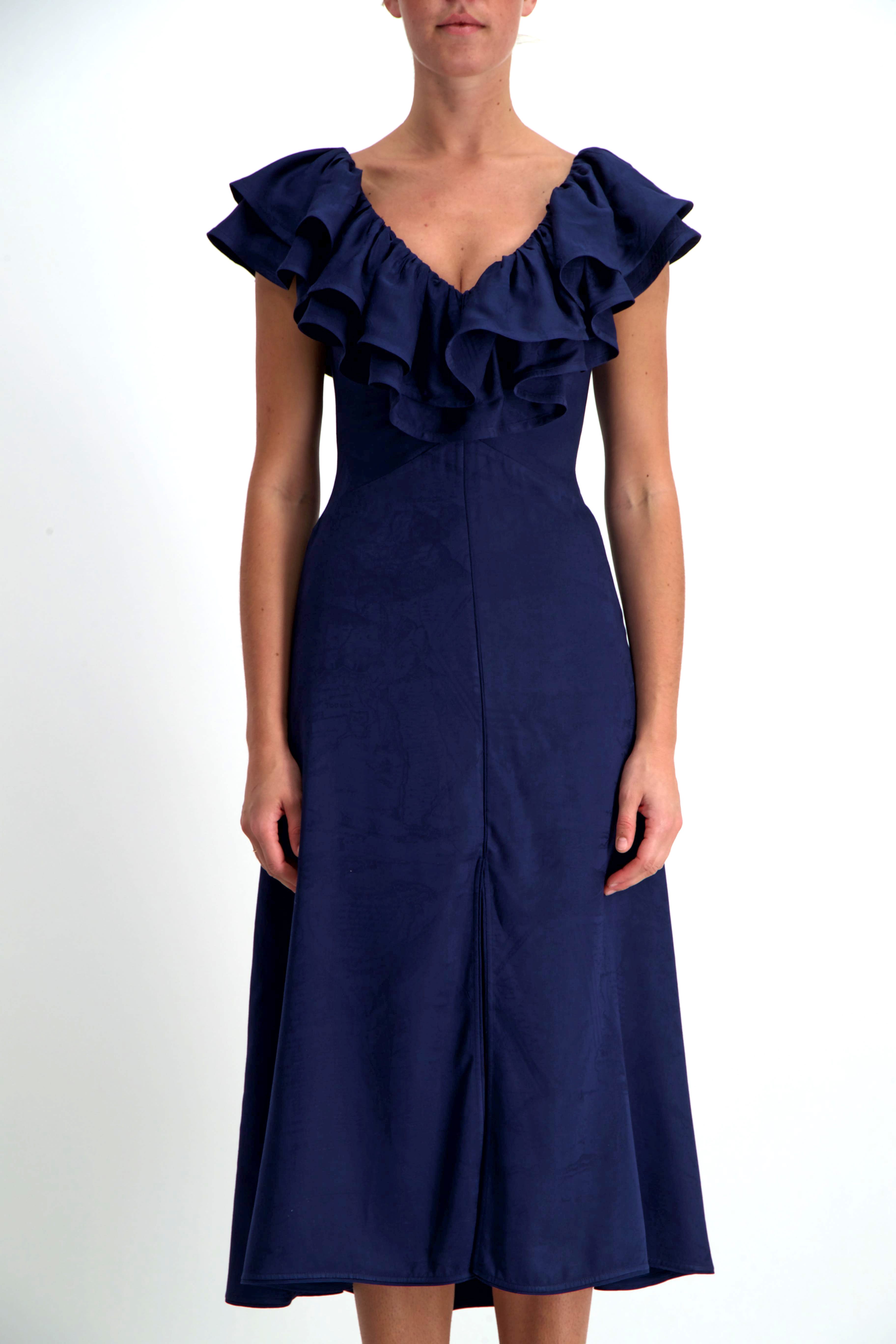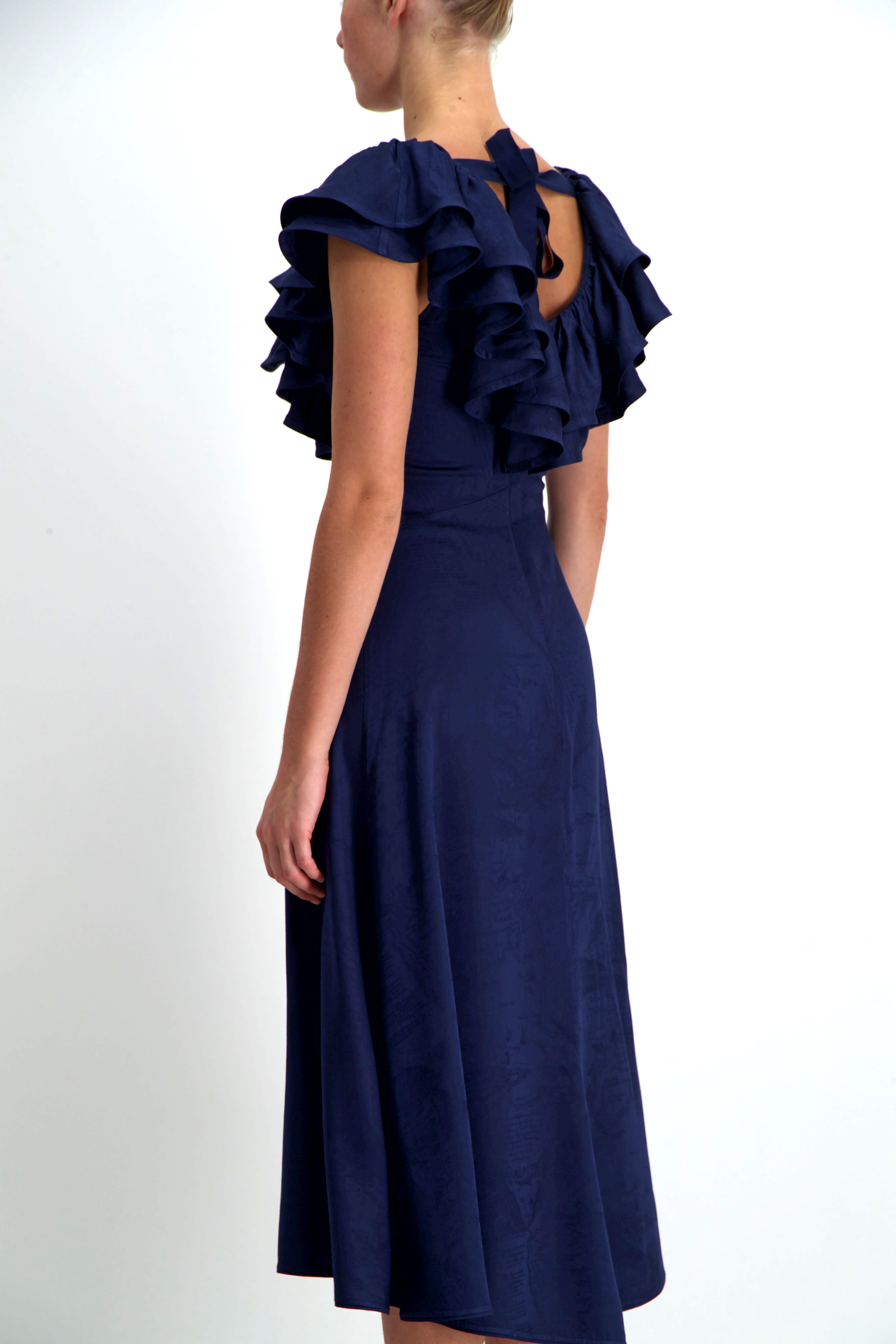
- Circulose Dress
- Chemical Recycling

A long dress in viscose jacquard woven fabric, of partially Circulose®. The V-neck blue dress is made out of worn-out cloths that has been recycled with a new technology developed by the company Renewcell. This chemical recycling technology dissolves used cotton and other natural fibers into a new, biodegradable raw material called Circulose pulp. It can be turned into textile fibers, be fed into the textile production cycle and meets industry specifications.
Dress in Circulose. Lining in recycled polyester. Circulose® is a new dissolving pulp product made by gently recovering cotton from worn-out clothes. Learn more about Circulose® at www.circulo.se
H&M and Renewcell
In July 2014, a model walked down a catwalk and into history. The yellow dress she was wearing was made out of blue jeans that had been recycled with Renewcell technology. It was the first garment in the world that had been made from chemically recycled used textiles and is the forerunner to this blue dress. The yellow dress is shown in the Smart Textiles Showroom.










The vast majority of our garments end up in landfills or are incinerated. Much too few are recycled because cotton and viscose can not be recycled with satisfactory quality on a large enough scale. The circularity of textiles stops, because there is a hole in the loop, a crucial part is missing. Until now.
The cotton fiber cannot be recreated to its original fiber structure through chemical recycling. But it can still be recycled through dissolving and releasing the cellulosic molecules. Chemical recycling technology dissolves used cotton and other natural fibers into a new raw material, such as Circulose pulp. This pulp can then be turned into textile fiber, be fed into the textile production cycle and meet industry specifications. The way fashion is produced and consumed can finally be transformed into a never-ending loop.
Could this be the key to recycling textiles on a massive scale and make fashion strive toward sustainability?
All group objects:
The current use of textile products is very unsustainable. We tend to buy many more products than we need and we throw away most of our textiles with the household waste, long before they are worn out.
The main challenges regarding resource efficient waste management includes improving collection rates, automated and material specific sorting technologies, and the scaling up of recycling technologies.
Intense research and industry innovation is focusing on the technology development needed, while policy and other financial instruments are developed at the national and EU levels. The need of the industry to secure recycled feedstock, in combination with upcoming EPR (Extended
Producer Responsibility) policies, will lead to new possibilities for the improved recycling of textiles.